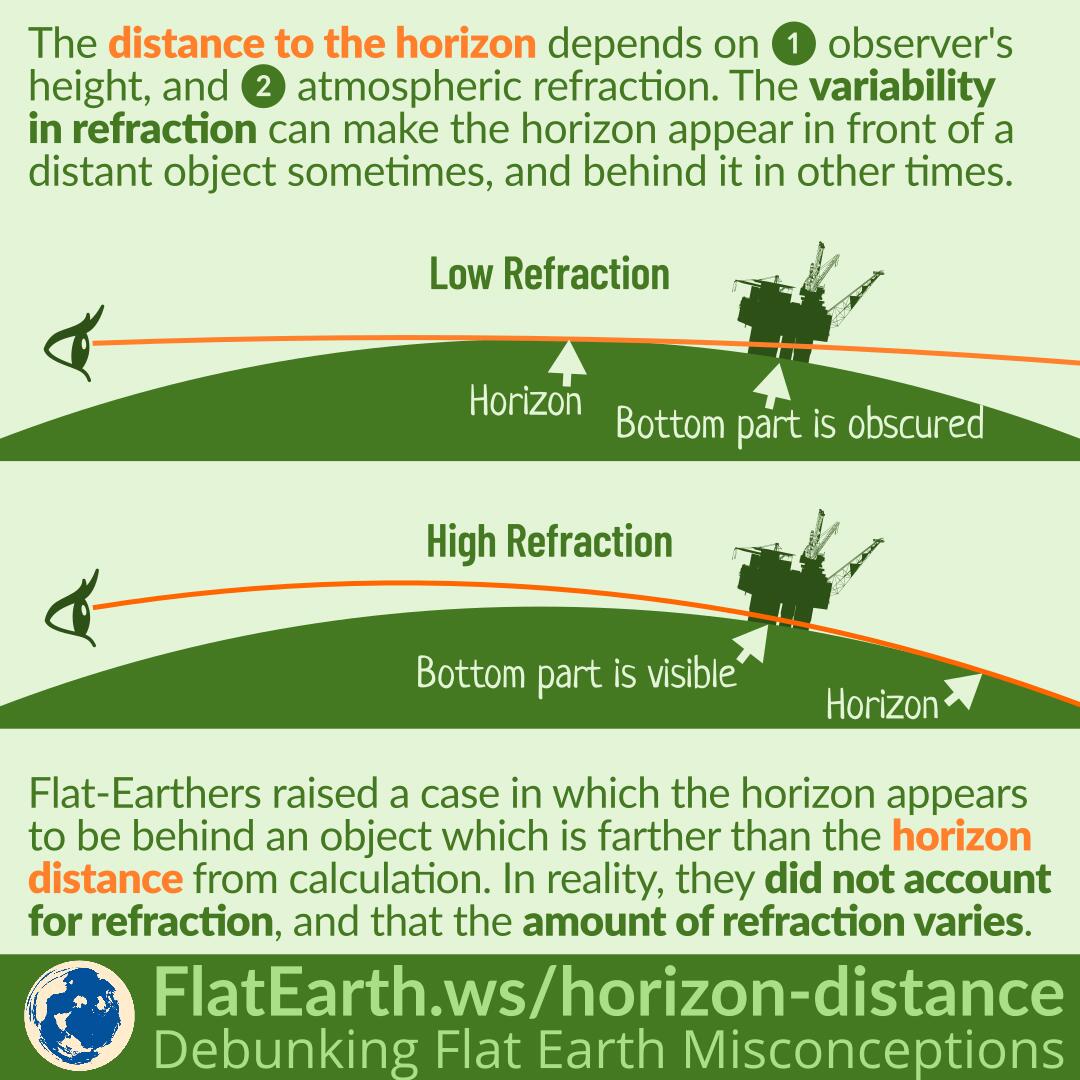The distance to the horizon depends on the height of the observer and atmospheric refraction. The variability in atmospheric refraction can make the horizon appear in front of a distant object sometimes, and behind it in other times.
Some flat-Earthers raised a case —dubbed the “black swan” case— in which the horizon appears to be behind a distant object which is farther than the distance to the horizon according to calculation, and they use the fact to “disprove” Earth’s curvature. In reality, they did not account for atmospheric refraction, and that the amount of refraction varies.
In this case, flat-Earthers showed us a picture of two oil rigs, where the distances are 9.41 miles and 6.21 miles. In the picture, the horizon appears to be behind both rigs. However, according to calculation, the distance to the horizon should have been 2.72 miles. Predictably, they gave an incorrect conclusion that the Earth is not a sphere.

In reality, they made a common flat Earthers’ error: the failure to account for atmospheric refraction. They also deliberately cherry-picked the moment where the weather condition is favorable to their claims. On another occasion, the horizon was clearly observed in front of the oil rigs.



